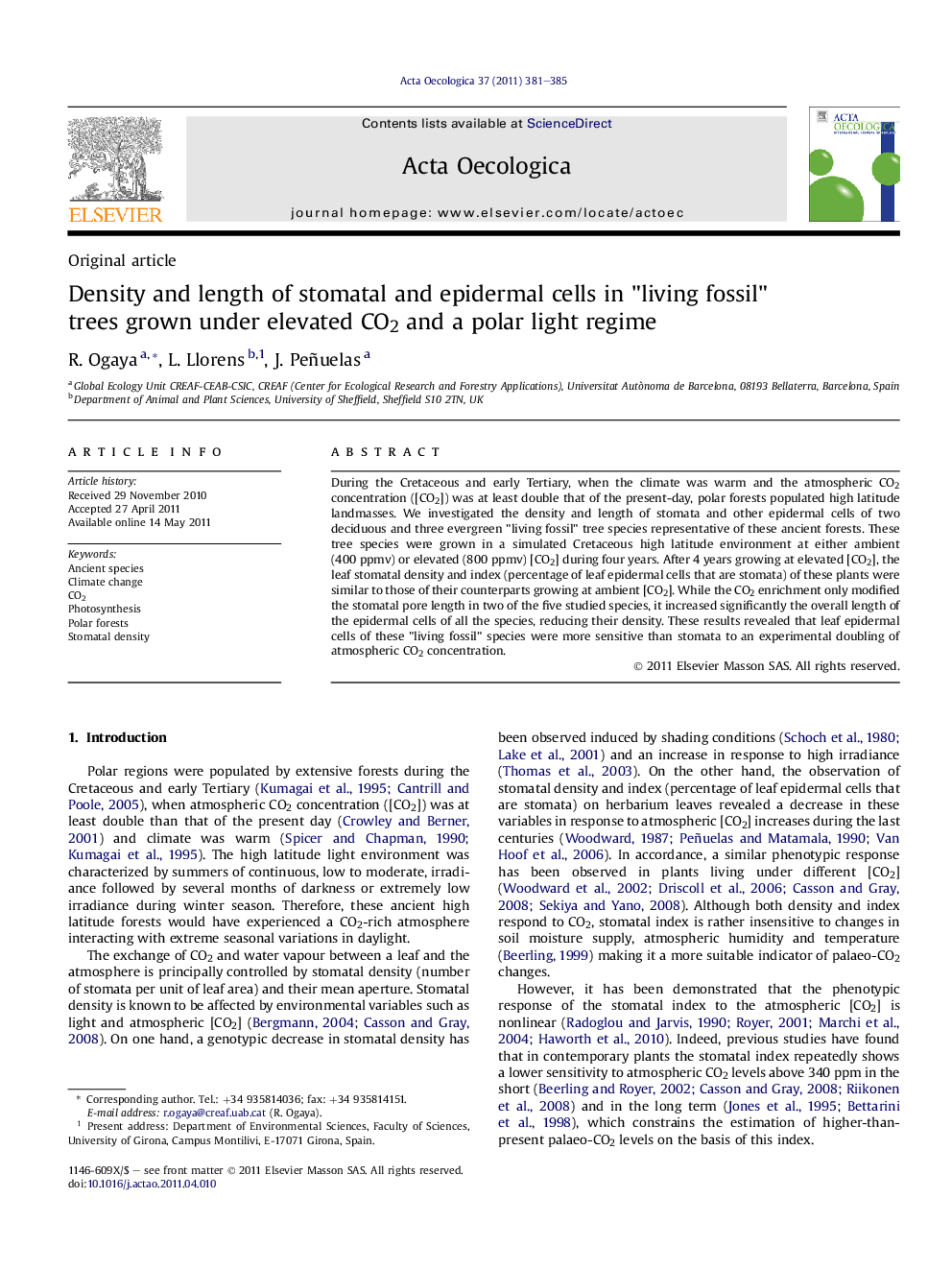| Article ID | Journal | Published Year | Pages | File Type |
|---|---|---|---|---|
| 4381511 | Acta Oecologica | 2011 | 5 Pages |
During the Cretaceous and early Tertiary, when the climate was warm and the atmospheric CO2 concentration ([CO2]) was at least double that of the present-day, polar forests populated high latitude landmasses. We investigated the density and length of stomata and other epidermal cells of two deciduous and three evergreen "living fossil" tree species representative of these ancient forests. These tree species were grown in a simulated Cretaceous high latitude environment at either ambient (400 ppmv) or elevated (800 ppmv) [CO2] during four years. After 4 years growing at elevated [CO2], the leaf stomatal density and index (percentage of leaf epidermal cells that are stomata) of these plants were similar to those of their counterparts growing at ambient [CO2]. While the CO2 enrichment only modified the stomatal pore length in two of the five studied species, it increased significantly the overall length of the epidermal cells of all the species, reducing their density. These results revealed that leaf epidermal cells of these "living fossil" species were more sensitive than stomata to an experimental doubling of atmospheric CO2 concentration.
► We investigated the effect of high [CO2] on stomata and other epidermal cells in five “living fossil” tree species. ► CO2 enrichment only modified the stomatal pore length in two of the five studied species. ► But it increased the overall length of the epidermal cells in all the species, reducing their density. ► The stomatal index reflects better the high [CO2] effects than stomatal density.
